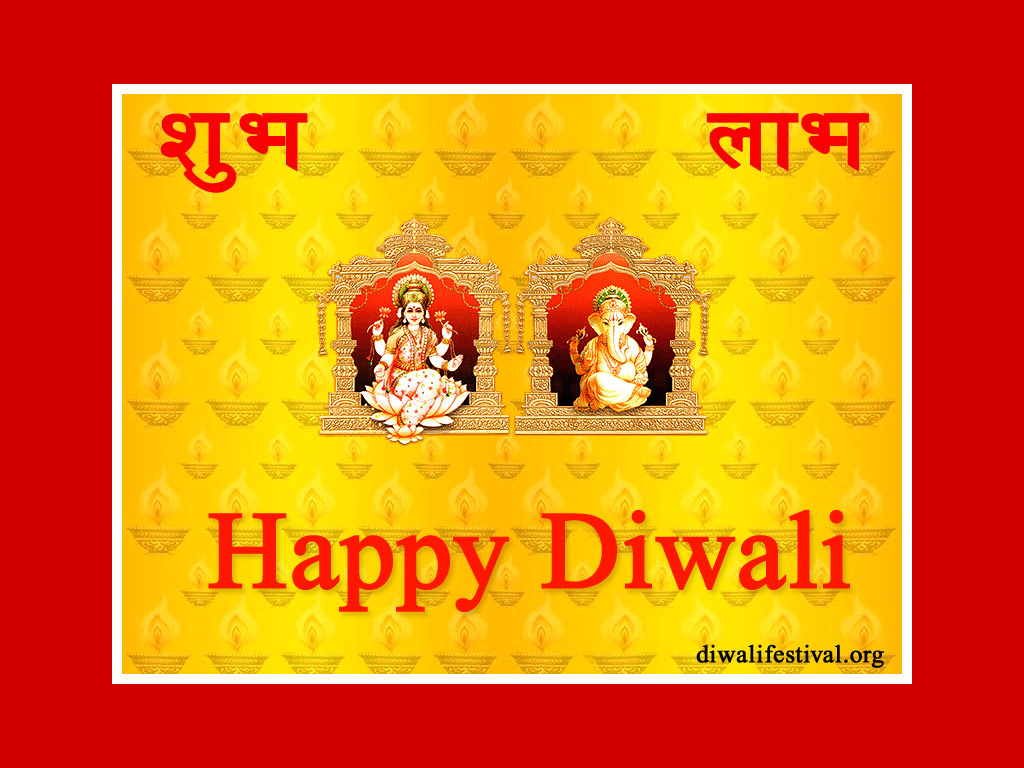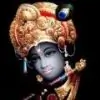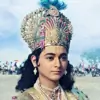In rural villages cattle are adorned and worshipped by farmers and, in the South of India, cows are offered special veneration as the incarnation of the goddess. Candles and lamps are lit as a greeting to Lakshmi.
In Indian culture, wealth is not viewed as a corruptive power. Instead, a wealthy person is believed to have been rewarded for the good deeds of a past life. On this day, people exchange gifts and purchase new items for the house, as this is considered auspicious, ensuring happiness and prosperity for the whole of the coming year. Businessmen (marwaldi) pray for prosperity on this day to Lakshmi to give them the best results for the year ahead.
Second Day ' Kali Chaudas
On the second day Kali, or Shakti, the goddess of power, is worshipped. Kali is power, or strength used for the protection of others, and Maha-Kali (supreme power) is the power of the divine force in the dance of destruction. This day celebrates the destruction of the demon (asura) Raktabija.
Another myth recalls the defeat of Naraksura, the demon-king of Prgjyotishapura (present day Assam). His yogic powers had fattened his ego, so he had become a menace to the people. He saw women as no more than a means fulfilling his desires and had 16,100 in his harem. The Gods implored Sri Krishna to rescue them from this fiend. Sri Krishna came from Dvaraka and destroyed Narksura's huge army, finally beheading Naraksura himself. The population was freed from the oppressive tyranny and everyone heaved a sigh of relief. All the women kept by the demon king were freed, and to preserve their social virtue, Sri Krishna made them all, at least nominally, his wives!
Diwali celebrates the end of the harvest, known as the Kharif when the fresh crop of rice is in, but also marks the beginning of the new season. Delicacies are prepared from pounded partly-cooked rice (called Poha or Pauva) from the recent harvest. This custom is held in rural and in urban areas, especially in Western India. This day (Kali Chaudas) also focuses on abolishing laziness and evil. North Indians call it Narak Chaudas and pray for the souls of departed loved ones.
Third Day ' Diwali
On the third and most important day ' the last day of the year in the lunar calendar ' lamps are lit, shining brightly in every home. The lamp shining at the dark of the New Moon symbolizes knowledge and encourages reflection upon the purpose of each day in the festival. The goal is to remember this purpose throughout the coming year. Lakshmi Puja (ceremonial worship) is performed on this day, awakening an appreciation of prosperity and a sense of responsibility towards it. Lakshmi, always depicted as a very beautiful woman, stands on a lotus. She has lotuses in various stages of bloom in her two hands and wears a lotus garland.
Cascades of gold coins are usually shown flowing from her hands, suggesting that those who worship her gain wealth. She always wears gold-embroidered red clothes, as red symbolizes activity and the golden lining indicates prosperity. Lakshmi is the active energy of Vishnu (the maintaining power of the universe), and also appears as Lakshmi-Narayan ' Lakshmi accompanying Vishnu.
Lakshmi is the Goddess of Wealth and Ganesha is the Lord of Happiness. Lakshmi and Ganesha Puja is performed for prosperity, material abundance, and spiritual prosperity. The faithful believe that the worship of Lakshmi should not be neglected, lest poverty and suffering fall upon those who fail to remember her.
This Puja is performed in the evening, as the Taurus ascendant and the Leo ascendant are considered the best for preserving material benefits for the year. At this time, old business accounts are settled and new books are opened. The books are worshipped in a special ceremony and participants are encouraged to remove anger, hate, and jealousy from their lives.
Fourth Day ' Vishkarma
The fourth day of Diwali falls on the first day of the lunar New Year and is called Vishkarma Day. Also known as Padwa or VarshaPratipada it marks the coronation of the legendary King Vikramaditya. Families celebrate the new year by dressing in new clothes, wearing jewellery and visiting family members and business colleagues bearing sweets, dried fruits and other gifts. This day is often used by manufacturers to pray for their equipment so that it works well and makes profit during the year ahead.
In ancient times, the people of Gokul would celebrate a festival in honour of Lord Indra, worshipping him at the end of each monsoon season. However, in one particular year, the young Krishna halted the custom of offering prayers to Indra ' who had in a fit of anger poured down a deluge to destroy Gokul. Krishna saved Gokul from the deluge by lifting up a mountain called Govardhan and holding it over the people as an umbrella. So, on this day, Govardhan Puja is performed to commemorate this feat by Shri Krishna.
This day is also observed as Annakoot and prayers are offered in the temples. In Mathura and Nathadwara, the deities are bathed in milk, then dressed in shining attire, featuring ornaments of diamonds, pearls, rubies and other precious stones.
Fifth Day ' Balipratipada On the final day (Balipratipada) of the festival, Bali, a titanic figure in Indian Mythology, is recalled. Bali was the powerful demon-king of Paataala (the netherworld), who had boldly extended his kingdom over the earth as well. On this day Shri Vishnu, taking the form of Vaamana, a dwarfish Brahmin, approached Bali requesting a boon comprising the amount of space equal to three of his steps. Bali, famed for his generosity, granted the boon. However, the "dwarf" then grew into a gigantic form and with one step covered the entire earth; with the second he covered the sky ' and then asked Bali where he should place his third step. Bali, left with no other choice, presented his own head. Shri Vishnu placed his foot on Bali's head, pushing him back down to the netherworld, the rightful territory of Bali's reign. However, Bali prayed that he might be permitted to visit the earth once a year. Then it was the turn of Vishnu to grant the boon. Thus, the focus of this day is to see the good in others, including enemies. It is particularly reverenced in Kerala.
The second day of the bright fortnight (Shukla Paksh) of Kartika is also called Bhaiya-Duj. In the Vedic era, Lord Yama (Yamaraj, the Lord of Death) visited his sister Yamuna (Yami) who marked the auspicious Tilak (sacred mark) on his forehead. They dined and talked together, enjoying each other's company, exchanging special gifts as a token of their love for each other. Yamaraj declared that anyone who receives the Tilak from his sister on this day is truly blessed. Since that time the custom has been for brothers to visit their sisters to celebrate Bhaiyaduj. The 'Teeka' is applied on the brother's forehead, but it is primarily a day dedicated to sisters. Raksha Bandhan may be "brothers' day", but this is "sisters' day".
The Tilak is marked in sandal paste (Vishnu), sacred ash (Shiva) or red turmeric (Devi/Shakti) on the forehead between the eyebrows at the Ajna Chakra, the "Third Eye" (the material varies according to the object of veneration of the devotee). The third eye is considered the eye of wisdom and the opening of this potent energetic factor, the destroyer of karma, is the focus of a great deal of religious, yogic and tantric concentration.




































